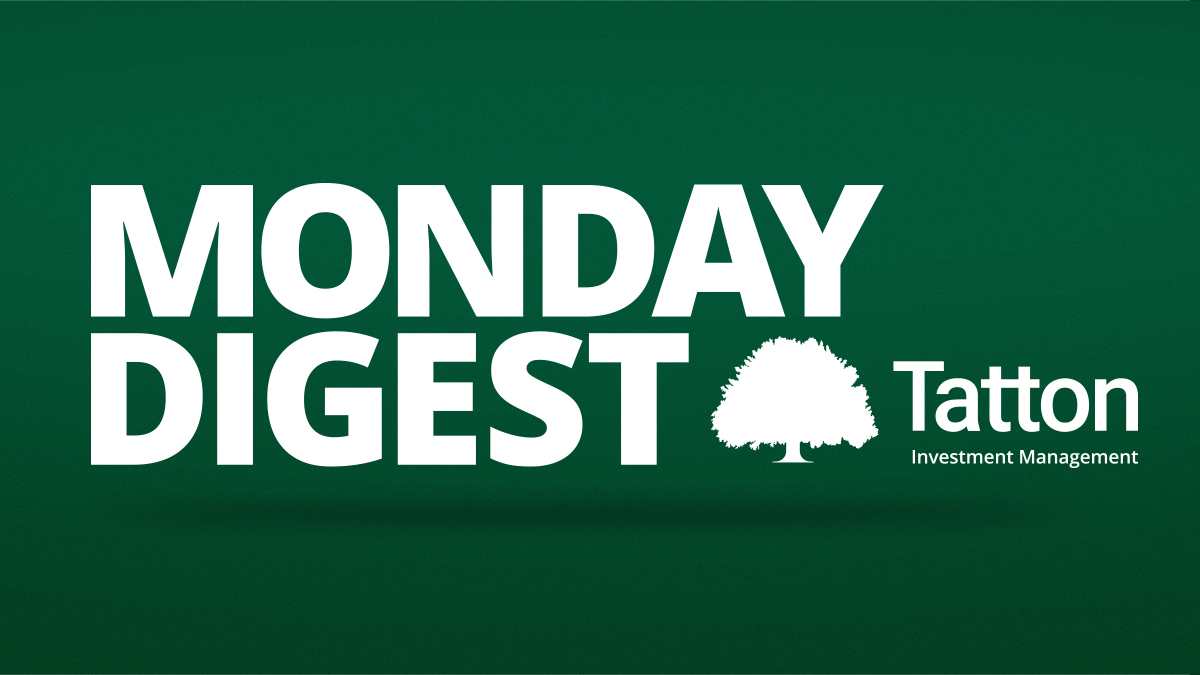Monday digest
Posted 18 March 2024

Overview: Rates up, down, and going sideways
Bond prices slid last week while consolidation continued in the global equity markets. Notably, Japan was weaker and US large caps largely unchanged. There was a sense of disappointment, that left investors wondering if optimism had got ahead of itself. Still, earnings growth expectations remains strong. Should equity investors worry?
US equity analysts have been raising earnings forecasts this year at around a 10% annualised pace, mirroring rising estimates of nominal growth activity, according to Bloomberg data. Our estimates have current US nominal growth running at 6%, up from December’s 4%.
Admittedly, a turn in inflation is responsible for much of the activity rise. US inflation data for February was stronger than expected, as it had already been for January. The US Federal Reserve Open Markets Committee (FOMC) meets on Wednesday and they will take some comfort that labour has been productive and that consumer confidence has slipped along with the past three month’s soggy retail sales data.
Nevertheless, the activity backdrop is probably higher than they were expecting. They have little room for complacency when the economy approaches capacity limits. For the medium-term, inflation is not troubling but it might need the FOMC to sound hawkish enough to push bond yields a bit higher. Households and businesses are sensitive to smallish rises.
A 10 year treasury yield above 4.5% would probably slow activity again. Equities might face some pressure but less than last autumn. We would not expect a repeat of the market ructions of last autumn but should be prepared for a bit of short-term volatility next week.
Outside the US, The Bank of Japan has indicated an end to its “Zero Interest Rate Policy”, equities took a sharp tumble and the Yen bounced. The annual “shunto” wage negotiation is likely to result in an average increase of more than 4%, the largest since 1992. Rates should rise this week and possibly to 1% in a year but the economy’s turnaround is not likely to be disturbed and there may even be positive impacts on confidence.
The ECB members met earlier this month and now seem to be lining up behind a June interest rate cut. Manufacturing is weak and has excess capacity (January Eurozone industrial production was horrible at -6.7% year-on-year). The recent pick-up in business sentiment is in part due to rate cut hopes. Unemployment is low amid labour ‘hoarding’ but the ECB seems to be prepared to look through this.
The Bank of England also meets this week. The UK has a tighter labour market so we expect no rate move and that they see everything as evenly balanced.
Beyond North America, the world has spare capacity. Few are unemployed but they are probably under-utilised so productivity can increase. Earnings growth outside of the US may therefore accelerate. For the US, as mentioned, earnings growth expectations are already strong and probably are at the limit of growth if inflation isn’t to be reignited. After lagging behind the US markets, the rest of the world may have a happier time.
China’s growth dulled by slow response
China’s National People’s Congress wrapped up with little fanfare abroad. The focus was on AI, “future industries” and a rising national defence budget, with only a customary reference to “reunifying” with Taiwan.
Some delegates were forthright about the economic challenges facing China – whose economy is growing well below pre-pandemic levels even according to dubious official figures. Housing minister Ni Hong called the country’s property market woes “very difficult” to fix, as officials from heavily indebted provinces reportedly met with state bankers on the side to discuss the considerable challenges they face.
Something that did not happen. It was announced last week that Prime Minister Li Qiang would not do give the usual press conference.
This was seen as a sign of the diminished role of the office of Premier. Coming at the same time as a change of official wording which reasserts party control over the state, some (for example Martin Wolf of the FT) have called it a sign of how centralised China has become under Xi. His rivals have been removed, replaced with loyalists or technocrats.
This is an economic issue. Responses to problems have become ineffective, as exemplified by the property market crisis. A vibrant market economy adjusts continuously to local supply-demand imbalances in goods, capital or people, but making those adjustments manually in a semi command economy like China’s, through policy is ultimately unfeasible.
Before Xi, many budgetary and borrowing decisions were made by local governments. Xi perceived them as ineffective and corrupt and replaced them with central government micro-management.
It was surprisingly successful in 2016, when China’s stellar growth was the biggest driver of the global economy. This success led to a widening of micromanagement; corporate crackdowns and an uneasy atmosphere of state repression towards the private sector.
One of the key problems the world’s second largest economy has grappled with in the post-pandemic period is overproduction. Factories kept running during lockdowns despite falling demand, and have kept going through a very tough period for consumers. The supply glut this created is one of the key reasons why China is struggling with deflation, even as other major economies grapple with the polar opposite. Meanwhile, goods deflation, particularly on electric vehicles and solar panels, has been exported to the rest of the global economy.
In the last month, investors have renewed their faith in Beijing’s ability to stimulate growth and, perhaps more importantly, that they will allow growth in private sector profits. Profits are low enough to be politically acceptable and are now rising. Unfortunately, we don’t know when rising profits might become a political problem again, so growth now could well come with downsides in the future. The centralisation of power makes it almost inevitable.


